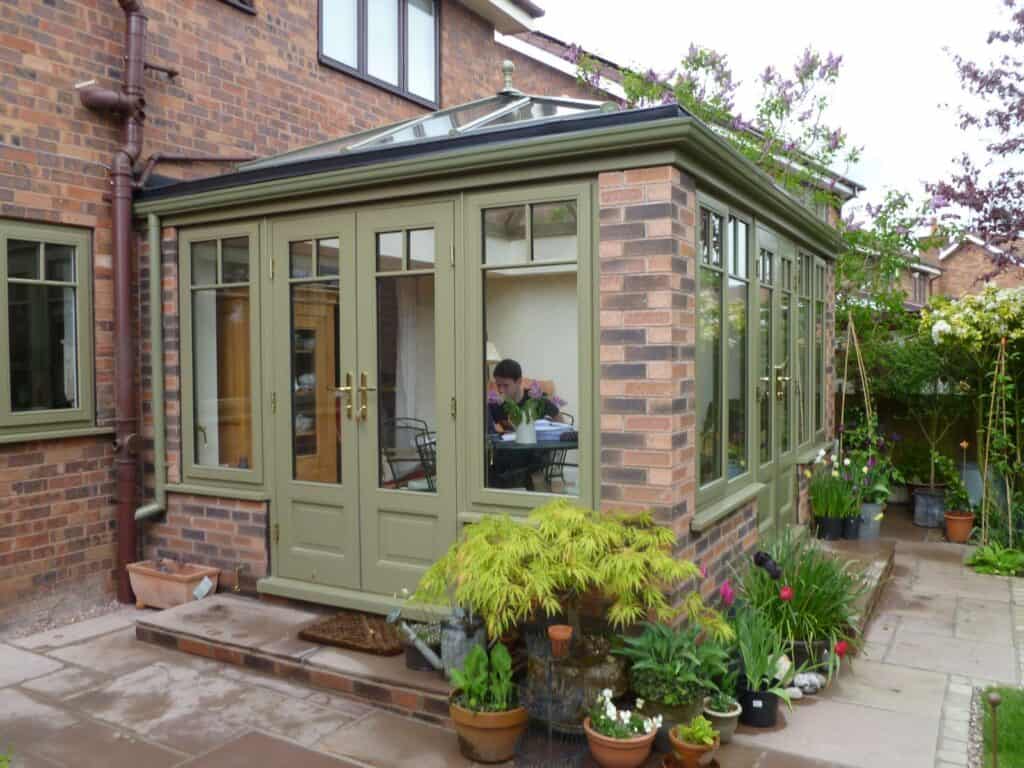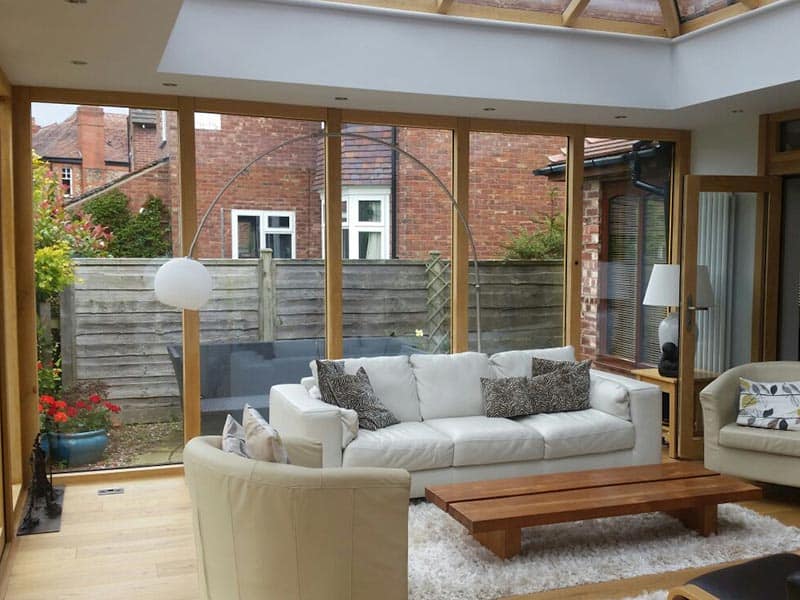Garden Design Ideas for Large Gardens: Maximising Space and Style
When you’re blessed with a large garden, the possibilities are endless, but so can be the overwhelming sense of where...
Read MoreLast Updated: 1 August 2025
Wondering “what is an orangery extension” and whether it could be the perfect addition to your home? The team at Reddish Joinery are here to help! Originally designed in the 17th century to protect citrus trees during harsh winters, orangeries have evolved into stunning architectural features that blend the best aspects of traditional extensions and conservatories. In this comprehensive guide, we’ll explore everything you need to know about these elegant home additions.

An orangery is a sophisticated hybrid between a conservatory and a traditional brick-built extension. The key distinguishing features include:
While both structures add valuable living space, there are several key differences between an orangery and a conservatory.
Orangeries typically feature:
Conservatories usually have:

Orangeries offer numerous advantages for homeowners. Some benefits of installing an orangery extension include:
Before starting your orangery project, consider these important factors:
The investment in an orangery typically ranges from £20,000 to £70,000, depending on a variety of factors including:
Consider these key aspects when planning your orangery:
As you can see, an orangery is an excellent addition to any property. When you want to extend your home in style, enhance your standard of living and increase your property’s market value, an orangery is the perfect solution.
If you’d like to find out more about orangeries designed and installed by Reddish Joinery, get in touch today. You can call us on 0161 969 7474 or send us a message online and we’ll get back to you as quickly as possible.
When you’re blessed with a large garden, the possibilities are endless, but so can be the overwhelming sense of where...
Read MoreUnderstanding the key difference between orangery and extension options can be crucial when planning to expand your living space. As...
Read MoreUnderstanding building regulations for orangeries is crucial when planning this elegant home extension. While orangeries can transform your living space...
Read MoreLooking to add a touch of elegance and value to your property? Want to increase your living space and boost...
Read More